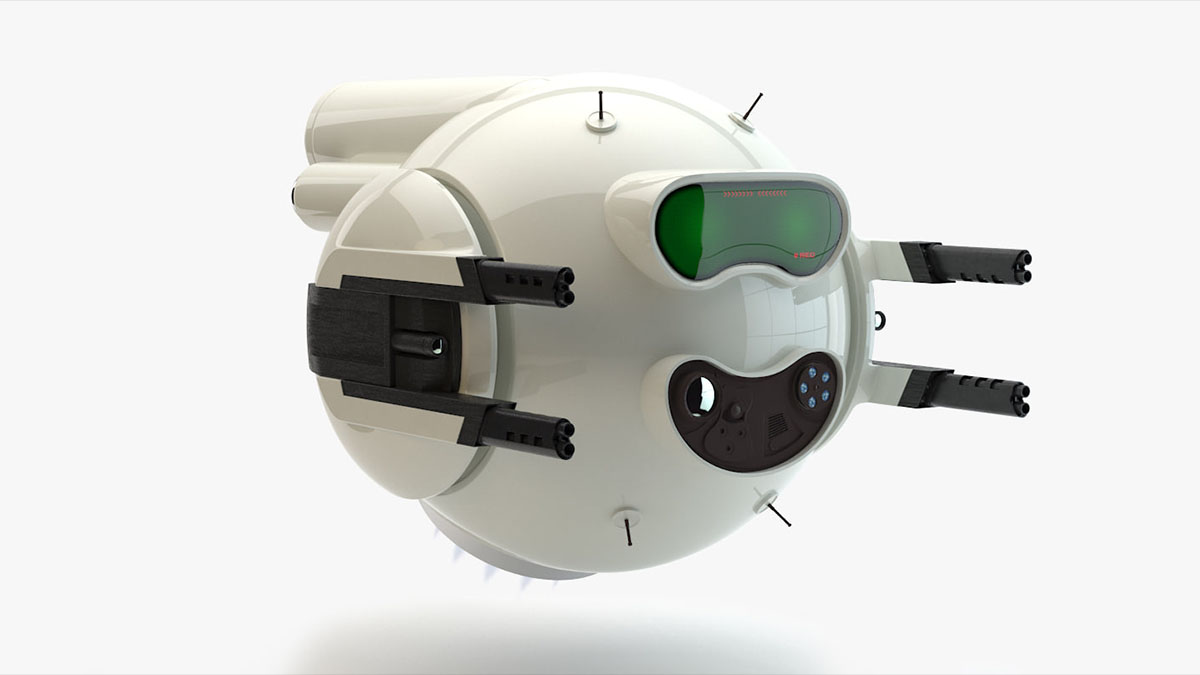when our killer robots attack

The year is 2025 and a small, sleek, triangular aircraft screams through the air over a war zone somewhere in Asia. As it approaches its mission objective, a devastating payload of missiles is launched from within its internal bomb bay in a deadly swarm and disperses towards their very own, individual targets. Within moments, the enemy outpost is rocked by simultaneous blasts. Everything from tanks to armories to barracks are blown to bits or engulfed in flames. All they saw was a blur in the skies that peeled out faster than any jet they’ve ever seen, some sure that their base was just attacked by an alien spacecraft in the first wave of an invasion. A pilot in this strange craft would surely black out from the sheer G-forces generated during its maneuvers, they say, and come to think of it there’s no room for a human pilot in the first place.
But it’s not an alien fighter. The origins of this craft are in a factory jointly ran by a few defense and aerospace contractors and it does have a pilot. It’s just that the pilot is thousands of miles away, guiding the aircraft via remote control, stepping in only when necessary to make evasive maneuvers an autopilot can’t. Until the bombing run, the robotic bomber relies on GPS and the guidance of its automatic flight systems. Its payload is smart enough to coordinate with a kind of hive mind in the bomber to select and lock on to individual targets in milliseconds. After the mission is complete, the pilot yanks the aircraft into a spiral to evade possible attack and steers it out of the active war zone. The autopilot takes over again, landing the bomber on a runway of an aircraft carrier or thousands of miles away at its home base.
And it doesn’t stop there. Robotic scouts explore urban hotspots, armed with armor piercing and incendiary rounds. Small, advanced probes patrol the skies, scanning for incoming jets or an approaching enemy convoy. Satellites above browse wide swaths of terrain to detect enemy movement and precisely target areas of interest. Another layer of satellites coordinates all the terabytes of data generated by the robots’ computers and ensures that the commands of their remote pilots are relayed. It all works together in a high tech symphony of destruction. Slowly but surely, the machines of malice have already started to take the place of soldiers. In the near future, there seems to be no reason for this trend to stop.
Sending a robot to the front lines is both practically and politically advantageous. Robots could take a lot more abuse than human soldiers. That’s what they’re built to do. They can also come with more firepower and be rigged with booby traps should someone actually manage to take them out of commission and try to examine them up close. Our theoretical bomber is able to pull of maneuvers that could render a pilot unconscious and without all the equipment needed to keep a human alive at stunning service ceilings, it could fly faster and higher than a modern, piloted jet. All a pilot has to do is step into a virtual cockpit and do the entire mission remotely as if the whole thing is a really complex video game or a training simulator except the screens show what’s actually happening in another part of the world, not just pixels. And isn’t it easier to run a military with easily replaceable, mass manufactured robots? Who’s going to complain about a robot body count being too high?
However, there are serious issues to consider before remote controlled killer robots take over en masse. With today’s technological imbalance on the battlefield, robotic armies wouldn’t be facing off against other robots. They would be used to aid soldiers in taking on other humans, enemy combatants who don’t have the same kind of capability. And is turning war into a video game like experience for thousands of troops an ethically sound idea? A military needs to use anything and everything it needs to get an edge. But are we really sure we want to sic squads of mechanical killers on our fellow human beings while we sit behind computers, ending lives with the press of a button? What if a future enemy also employs countless robots? Would the battle between mostly mechanical militaries last longer because humans are no longer right there on the front lines and factories are on standby to keep cranking out mechanical soldiers?





